Not always collects everything sown
2000/06/25 Carton Virto, Eider - Elhuyar Zientzia
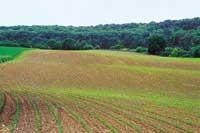
Newcastle researchers investigate two countries: The United Kingdom and the Spanish State have obtained the same result, with a smaller crop in the presence of ozone. They studied the first rape plant. The plants grew at the same ozone levels as 90% of the UK's rural land and harvest yields were 14% lower than the corresponding. In this case, the harvest suffered a loss of 13%. Before, when the possible incidence of ozone on the harvest has been studied, it has not been concluded that the vegetation did not present any external signs of damage: the leaves would not rot and the harvest seemed healthy.
More sensitive than expected
Now, however, research has focused on the exterior aspect and has resulted in different results: ozone has an effect on the harvest and not negligible. The latest research has not been carried out in laboratories, but in the field. The plants have sown and grown in real land, so the development of the harvest has continued at all times. That is, crops have grown in totally natural conditions, but the ozone level has been controlled. In practice the air inhaled by the plants has incorporated precise and known ozone doses, observing the evolution of the planted plantation.
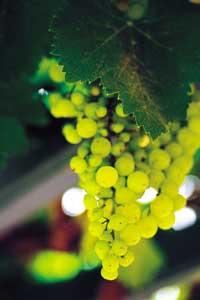
In the case of rape, the number of flowering branches from each plant has been reduced by 38%, although the fruits of each pod are larger and larger. However, yields of the “eurol” variety of rapeseed (the most sensitive type) have decreased by 14% overall. And not only that: the content of fruit oil has been reduced by 5%. If we turn these numbers into money: about 6,500 pesetas per ton of rapeseed and about 2,300 pesetas per ton of oil have been lost.
As for wheat, yield reductions have also been notable. In addition to reducing the number of specimens per head, non-productive flanders increase. In addition to the effects of both, the harvest has suffered a yield loss of 13% or what is the same, a loss of money per hectare between 25,000 and 40,000 pesetas. All of them are results of research carried out in the United Kingdom, but, as mentioned at the beginning, in the Spanish State this type of studies have also been carried out. In the Mediterranean area, even more worrying results have been obtained: apart from the fact that the yield of the harvest is lower, the researchers have detected a series of damages that were clearly seen in the plants: the oldest leaves of the top of the plants faded and, in the end, died.
Review rules
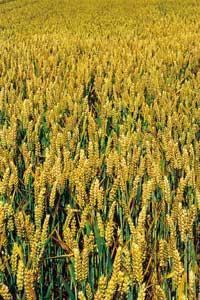
Research has lasted for two years. The starting point was the critical ozone level set by the United Nations Economic Commission for Europe (UN-ECE). In the first year the crops grew in concentrations twice higher than the critical ozone level, while in the second year the critical ozone concentration increased by five. Crop losses were 19% and 39% respectively, much higher than those predicted by the researchers. Therefore, the need to review the critical ozone level established by UN-ECE, which is valid in only limited climatic characteristics in Europe, has been stressed.
UN-ECE established the conditions from which ozone can damage the harvest and take measures, common standards at European level. Decisions, however, are mainly based on data collected in central and northern Europe and are valid in its climate. According to these standards, in trials conducted in the Mediterranean region, for example, crop restrictions should be 10% lower and are not.
Ozone is formed by the reaction between nitrogen oxide and oxygen in the lower part of the atmosphere. The molecule has always formed in the atmosphere, but since we started using fossil fuels, we have broken the cycles of ozone formation and consumption and ozone has accumulated in the atmosphere. In addition, the reaction is not very rapid and therefore far from sources of contamination, high concentrations of ozone are often measured. That is, although pollutants are emitted mainly in cities, their effects are also manifested in the fields. On the other hand, the Sun accelerates and intensifies all these reactions, so plants of sunny climates usually have greater problems. Accordingly, they request a review of the critical level established by UN-ECE.
The United Nations Economic Commission for Europe launched in the late 1980s a programme to analyse the influence of ozone on plants and crops. It includes Germany, Austria, Belgium, Finland, France, Greece, Ireland, Italy, Holland, Poland, Russia, Slovenia, Spain, Sweden, Switzerland, United Kingdom and the United States, being the coordinating country of the United Kingdom.
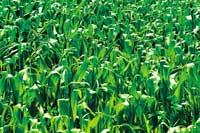
The international study focuses on white clover, but also potato, wheat and some herbaceous species. In addition to the obvious damage, an effort has been made to measure the loss of biomass, which ultimately represents the yield of the harvest. It is said that this is a complex measure, since humidity, temperature, the amount of water the soil has and the presence of pollutants have a great influence on this point. With the data collected models have been designed and the mentioned critical ozone levels have been set.
But it seems that those levels are in danger. As more research is done, interactions between ozone and plants will become better known and new limitations will be established, but it is clear that this is not a basic problem. An important study for science is that increasing or decreasing a critical ozone level point will have its economic reflection, but the key is reducing ozone levels in the atmosphere, that is, controlling pollution sources.
How does ozone affect plants?
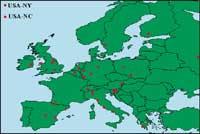
Ozone is one of the multiple constituents of smog, which affects the atmosphere of the most developed countries. Ingurugiroaren handia izan da, lur inguru, trafikoengatik edo fosiletako trafikoengatik izan zen, aspaldidanik lotuta izan da zelan eta sail bakoitzak izan dituen kalteei, baina ez nuez zen zerik ere nola egiten den kimiku hori. Hori bai, jakina da galera millonaria sortzen direla nekazaritza.
Izan ere, horrek ez du hori bakarrik, izan ere, produkzioak bera ere. Teorian barajada orain arte considered that ozone closed the "pores" that plants use both to absorb carbon and to allow the oxygen result of photosynthesis. Hala ere, egoera hori egiten du ozono-eragin izango da, politika guardia horiek portatzen duten zaindu nahi duten celulari.
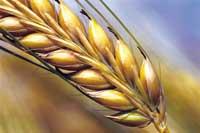
III.- Prot. poroen bidez ere prot. Hori guztiak egin ziren gutxitzea. Ikerariak batzuk uste dute arazo horrek aldaketak genetikaren bidez solventatzea. Genetically plantak aldatuz, ozonoa eragin ez dadin, emankortasun geografikoak hobetzeko, horisail en artean oso ilustuta ikusten da. Baina horrek hitz gehiago dira.
Published in the supplement Natura de Gara

Gai honi buruzko eduki gehiago
Elhuyarrek garatutako teknologia






